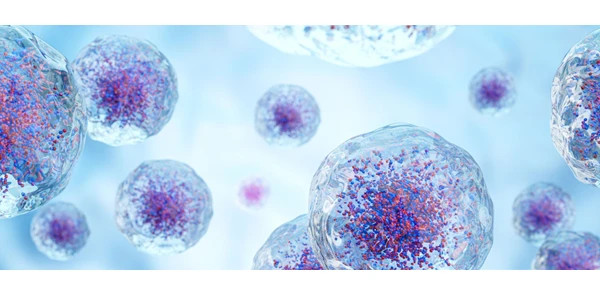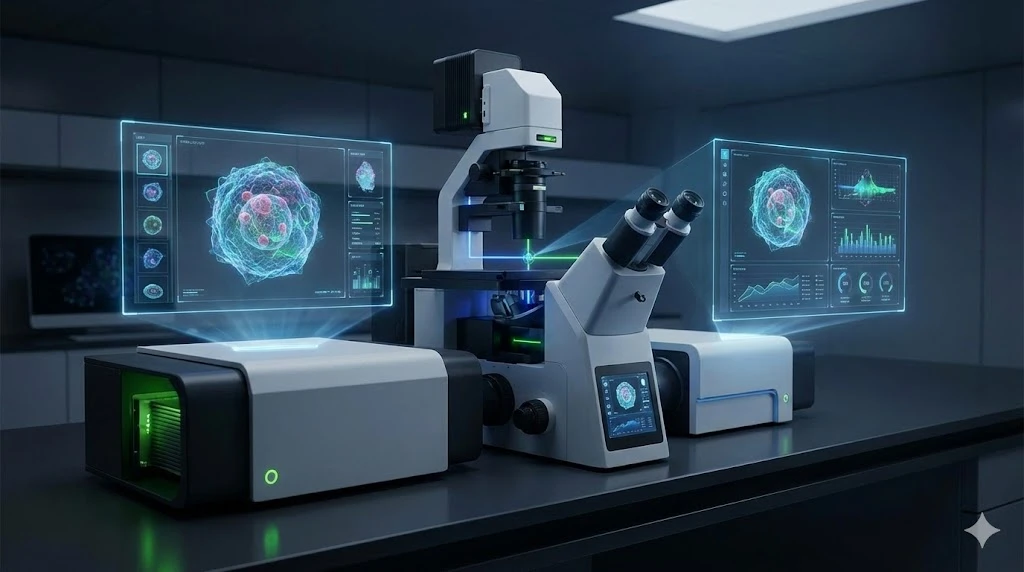Forging the Path of the Imaging Resolution Revolution
Innovations and achievements in imaging technologies have heralded “a new era in molecular biology, where structures at near-atomic resolution are no longer the prerogative of x-ray crystallography or nuclear magnetic resonance (NMR) spectroscopy.”
This proclamation in 2014 referred to the foundation of a revolution in imaging that has expanded to include high-resolution applications in molecular genetics, cell biology, and other areas -- far beyond the prior limits of traditional structural studies.
With advanced tools and techniques in hand, imaging technologies continue to forge ahead, detailing biological intricacies that were once off limits to the human eye. A few areas in particular promise to make for an interesting year and offer extraordinary vision for what is to come.
In 2014, Amunts et al. reported in Science on the structure of the yeast mitochondrial ribosome large subunit at 3.2 Å resolution. A great achievement in of itself, perhaps more remarkable was that the image was obtained using cryo-microscopy (cryo-EM) – a technique previously limited to 10-100s Å resolution.
Prior to the published result, ribosomes had been captured and visualized to some extent by x-ray crystallography. The limits of crystallography, such as the requirements for large amounts of purified material incubated under highly controlled chemical conditions, however, limited the types and conformations of supermolecular complexes that could be visualized.
Advancements in sensor and electron detector technologies allowed unprecedented speed and sensitivity in cryo-EM imaging. Very small amounts of sample, including heterogenous samples, could serve as source material visualized by the assistance of image processing techniques. Essentially, dozens of electron images could be taken and deconvoluted by computer algorithms to correct the inherent blurriness that accompanies complex imaging, thus yielding high-resolution structures of complex biomolecules. Although these new structural improvements are not without technical challenges, the net effect was widely observed across the field of structural biology.
From these formative beginnings, increases in resolution technologies have led the advance of bigger, more complicated, and arguably more impactful applications.
Super-resolution genetic imaging
The past year has witnessed the application of advanced microscopy to exciting areas including the structure and organization of chromatin contained within the chromosomes of cells. It’s well known that the 3D organization of chromatin is directly tied to the processes of gene expression, DNA and cell division and other events implicit to chromosomes.
Now possible to image with nanometer precision, individual DNA sequence information can be assigned to structural domains across many different cell types. The greater power of visualization has enabled scientists to identify distinct domains underlying specific processes and track how these vary among cell types. The outlook includes a better understanding of gene regulation and it’s potential malfunction during disease.
Imaging molecular space and time
Beyond genetics, improvements in super-resolution imaging is enabling more concise mapping of molecular interactions. Enhancements will likely progress as a result of innovations in probes and tagging techniques as well, in addition to image capture and deconvolution advancements.
Along with image resolution will come enhancements in imaging speed. Faster image acquisition means that many genes and proteins that comprise the cell many be viewed simultaneously, providing a temporal fourth dimension to 3D imaging of cellular operations -- such as the dynamics of DNA replication and cell division.
Expansion microscopy imaging of cells and tissues
A new frontier in super-resolution imaging involves cell or tissue level studies using a technology called expansion microscopy. This approach employs expandable hydrogels to isotopically increase the physical distance between fluorophores in biological samples.
The technique involves a series of sequential stages, including immunostaining, anchoring, polymerization, homogenization, expansion, imaging, and image validation. A typical expansion of 4x results in an imaging resolution of 60 – 80 nm, although recent advancements have boosted this expansion to 10x, with a net resolution increase to 25 nm. Although somewhat labor- and time-intensive, the technique creates a view into a world previously unattainable at this resolution and scale.
Outlook for super-resolution microscopy
Nanometer-scale super-resolution technology is extending to other frontiers of research beyond the biological realm. Materials science and complex synthetic materials stand to benefit by greater understanding of the relations between formation, structure, dynamics, and function. Super-resolution microscopy holds the promise to bridge these concepts and further the rational design of novel materials for a myriad of applications.
With no shortage of new territory to explore, it will be interesting to watch as the resolution revolution continues to forge onward.
View Microscope and Microscope Accessories listings at LabX.com










